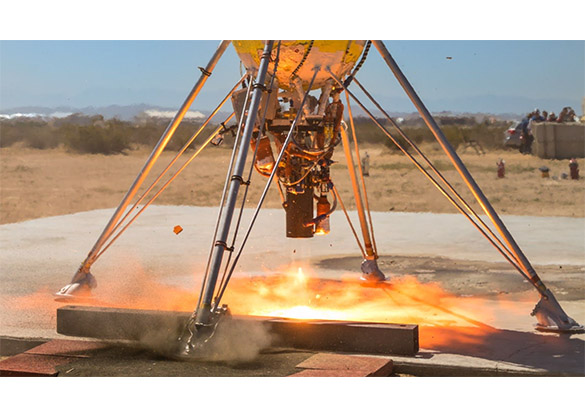Honeybee Robotics PlanetVac on Masten Lander
PI: Kris Zacny, Fredrik Rehnmark (Co-I), Honeybee Robotics Ltd. - Brooklyn
PI: Kris Zacny, Fredrik Rehnmark (Co-I), Honeybee Robotics Ltd. - Brooklyn

- TA04 Robotics, Tele-Robotics and Autonomous Systems
- TA08 Science Instruments, Observations and Sensor Systems
The PlanetVac technology has been steadily climbing up the TRL ladder and it is now at TRL4. The pneumatic system has been tested in a vacuum chamber at 1/6th G (on zero-g airplane) and demonstrated excavation efficiency of 1:6000 (1 gram of N2 gas at 6 psia lofted equivalent 6000 grams of JSC-1a lunar soil simulant). The scaled model of PlanetVac was also fabricated and tested in a large vacuum chamber (https://www.youtube.com/watch?v=JzMn5DbhpjE).
This project will help to bring PlanetVac to TRL 5/6 and position PlanetVac technology for several missions from Asteroids, Comets, Mars, and the Moon including NASA New Frontiers: Lunar South Pole Aitken Sample Return, Mars Sample Return, and Comet Nucleus Sample Return.
Technology Details
-
Selection DateREDDI-F1-16 (Jul 2016)
-
Program StatusCompleted
- 1 sRLV
Development Team
-
PIKris Zacny
-
PI Organization
-
Co-IFredrik Rehnmark
-
Co-I Organization
-
SponsorNASA
-
More Information

